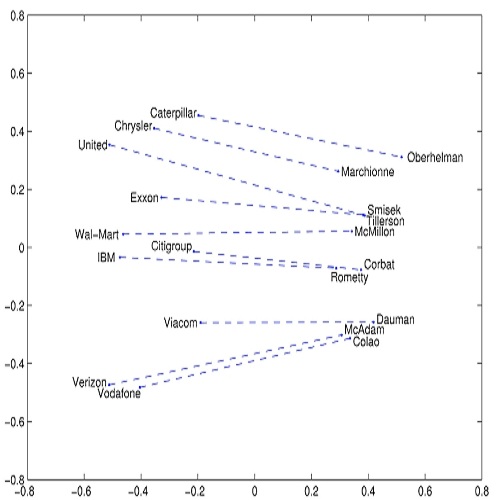Intersectional bias is a bias caused by an overlap of multiple social factors like gender, sexuality, race, disability, religion, etc. A recent study has shown that word embedding models can be laden with biases against intersectional groups like African American females, etc. The first step towards tackling such intersectional biases is to identify them. However, discovering biases against different intersectional groups remains a challenging task. In this work, we present WordBias, an interactive visual tool designed to explore biases against intersectional groups encoded in static word embeddings. Given a pretrained static word embedding, WordBias computes the association of each word along different groups based on race, age, etc. and then visualizes them using a novel interactive interface. Using a case study, we demonstrate how WordBias can help uncover biases against intersectional groups like Black Muslim Males, Poor Females, etc. encoded in word embedding. In addition, we also evaluate our tool using qualitative feedback from expert interviews. The source code for this tool can be publicly accessed for reproducibility at github.com/bhavyaghai/WordBias.
翻译:由于性别、性、性别、种族、残疾、宗教等多种社会因素的重叠,造成部门间偏见。最近的一项研究显示,嵌入的字形可以加上对非洲裔美国人女性等交叉群体的偏见。 解决这种交叉偏见的第一步是查明它们。 然而,发现对不同交叉群体的偏见仍然是一项艰巨的任务。 在这项工作中,我们介绍WordBias,这是一个互动的视觉工具,旨在探索对静态单词嵌入中编码的交叉群体的偏见。鉴于预先训练的静态字嵌入,WordBias根据种族、年龄等不同群体对每个词的关联进行编译,然后利用新的互动界面将它们直观化。我们通过案例研究展示WordBias如何帮助发现对黑穆斯林男性、贫穷女性等交叉群体的歧视。此外,我们还利用专家访谈的质量反馈来评估我们的工具。这个工具的源代码可以公开查阅,以便在github.com/bhavyaghai/WordBiasbias重新显示。




